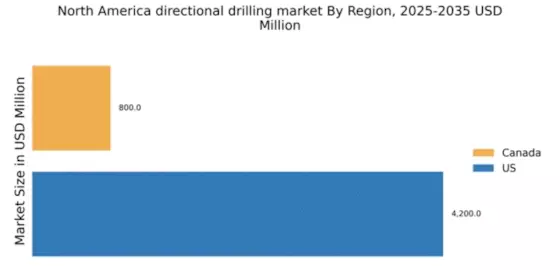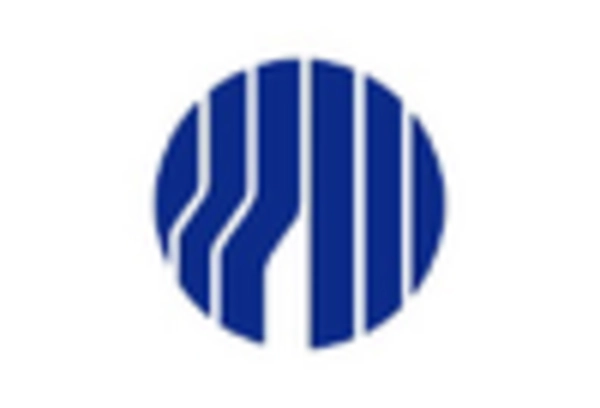Rising Energy Demand
The increasing energy demand in North America is a primary driver for the directional drilling market. As populations grow and economies expand, the need for oil and gas resources intensifies. In 2025, North America is projected to account for approximately 25% of the world's total energy consumption. This surge in demand compels energy companies to adopt advanced drilling techniques, such as directional drilling, to access hard-to-reach reserves. The directional drilling market benefits from this trend, as it allows for more efficient extraction of resources while minimizing surface disruption. Furthermore, the ability to drill multiple wells from a single location enhances operational efficiency, making directional drilling an attractive option for energy producers.
Focus on Resource Optimization
The emphasis on resource optimization in the energy sector is driving the directional drilling market. Companies are increasingly seeking methods to maximize output while minimizing costs and environmental impact. Directional drilling allows for the efficient extraction of resources from multiple reservoirs with fewer drilling sites, thereby reducing surface disturbance. In 2025, it is anticipated that companies focusing on resource optimization will account for over 40% of the directional drilling market. This trend reflects a broader industry shift towards sustainable practices and efficient resource management. As energy companies prioritize these objectives, the demand for directional drilling services is expected to grow, positioning the directional drilling market for continued expansion.
Increased Investment in Infrastructure
Investment in infrastructure development across North America is a crucial driver for the directional drilling market. The expansion of pipelines, refineries, and processing facilities necessitates the exploration of new oil and gas reserves. In 2025, infrastructure spending in the energy sector is projected to reach $200 billion, creating a favorable environment for directional drilling activities. This investment not only supports the extraction of resources but also enhances the overall efficiency of energy distribution. As infrastructure projects progress, the demand for directional drilling services is likely to increase, providing opportunities for companies within the directional drilling market to expand their operations and improve their market position.
Regulatory Support for Energy Projects
Regulatory frameworks in North America increasingly favor the development of energy projects, which significantly impacts the directional drilling market. Governments are implementing policies that streamline permitting processes and provide incentives for energy exploration and production. For instance, in 2025, several states have introduced tax breaks for companies utilizing advanced drilling technologies. This regulatory support encourages investment in directional drilling, as it allows companies to operate more efficiently and cost-effectively. Additionally, favorable regulations can lead to increased exploration activities, further driving the demand for directional drilling services. As a result, the directional drilling market is likely to experience growth as companies capitalize on these supportive policies.
Technological Integration in Drilling Operations
The integration of advanced technologies in drilling operations is transforming the directional drilling market. Innovations such as real-time data analytics, automation, and improved drilling equipment enhance the efficiency and accuracy of drilling processes. In 2025, it is estimated that the adoption of these technologies could increase drilling efficiency by up to 30%. This technological advancement not only reduces operational costs but also minimizes environmental impact, aligning with the industry's sustainability goals. As companies seek to optimize their drilling operations, the demand for directional drilling services is expected to rise. Consequently, the directional drilling market is positioned to benefit from these technological advancements, leading to improved performance and profitability.


















Leave a Comment